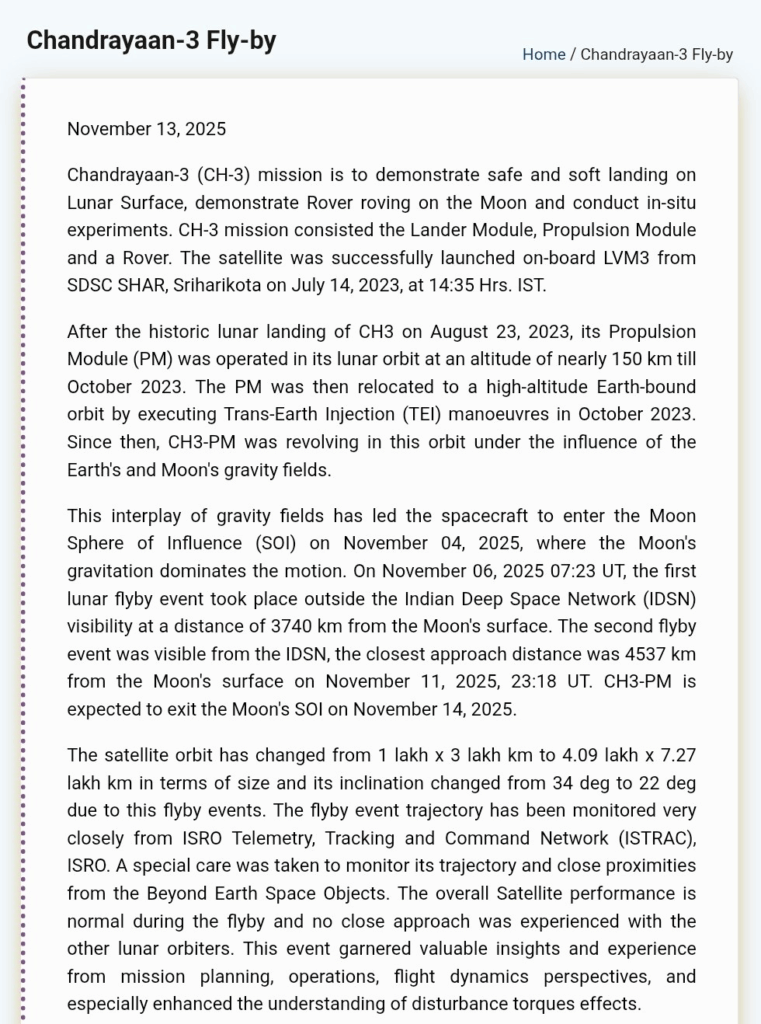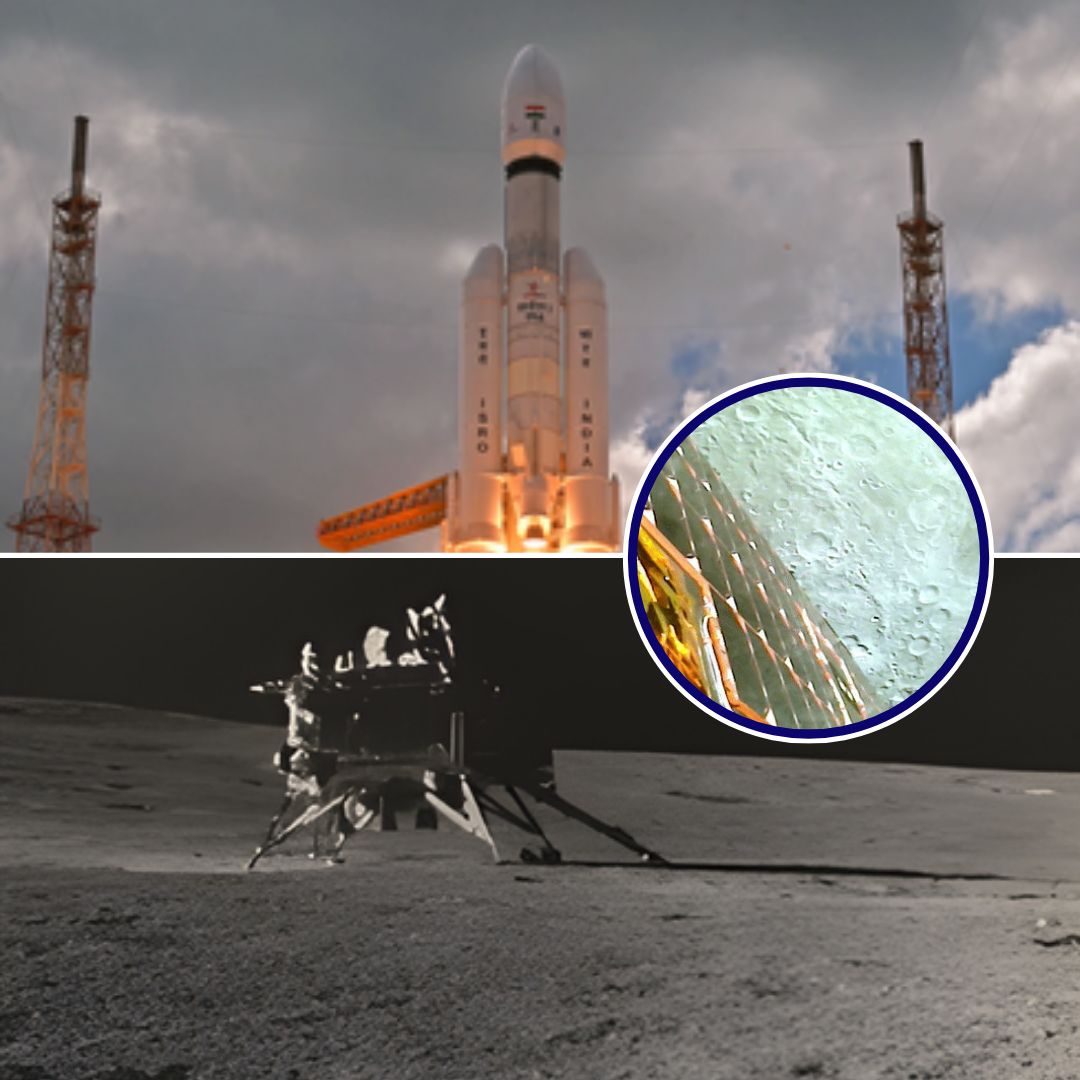Chandrayaan-3’s Propulsion Module (CH3-PM) has made headlines by re-entering the Moon’s sphere of influence (SOI) for a series of lunar flybys, more than two years after the historic soft landing of the lander and rover in August 2023.
The first flyby occurred on November 6, 2025, at a distance of 3,740 km from the lunar surface, followed by a second flyby on November 11 at 4,537 km. These events have provided the Indian Space Research Organisation (ISRO) with a wealth of operational data, offering new insights into spacecraft navigation and orbital mechanics.
Orbital Dynamics and Mission Details
Launched on July 14, 2023, Chandrayaan-3 was designed to demonstrate a safe lunar landing, rover operations, and in-situ scientific experiments. After the lander and rover completed their objectives, the propulsion module was repositioned into a high-altitude Earth-bound orbit in October 2023 via trans-Earth injection (TEI) manoeuvres.
For over two years, the module’s path was influenced by the gravitational fields of both Earth and the Moon, culminating in its re-entry into the Moon’s SOI on November 4, 2025. The flybys have significantly altered the module’s orbit, expanding its size from 100,000 x 300,000 km to 409,000 x 727,000 km and shifting its inclination from 34° to 22°.
ISRO’s ISTRAC network has kept a vigilant watch, ensuring safe separation from other lunar orbiters and cataloguing valuable data on gravitational interactions and satellite dynamics.
Scientific and Operational Significance
These rare lunar flybys have energised planetary scientists and mission planners, showcasing ISRO’s growing expertise in post-landing spacecraft utilisation and expanding humanity’s playbook for future deep space missions.
The data gathered will aid in refining mission planning, understanding disturbance torques, and enhancing flight dynamics perspectives. ISRO officials report the spacecraft remains in nominal condition, with no threats or collisions detected. The module is expected to exit the Moon’s SOI on November 14, 2025, marking the end of this unique gravitational tour.
Chandrayaan-3: A Legacy of Innovation and Discovery
Chandrayaan-3’s journey is not just about landing on the Moon; it represents a leap in India’s space capabilities and scientific ambition. The mission’s success in achieving a safe soft landing near the lunar south pole, a region rich in water ice and unique minerals, has opened new avenues for future exploration and resource utilisation.
The rover Pragyan’s traversal and elemental analysis confirmed the presence of hydroxyl groups and water ice in shadowed craters, expanding potential lunar mining zones by nearly 40% compared to previous missions. These findings are crucial for future human habitation and in-situ resource utilisation (ISRU) on the Moon.
Chandrayaan-3’s scientific payloads, including RAMBHA and ChaSTE, have provided vital data on plasma density, thermal properties, and lunar composition, enhancing our understanding of the Moon’s environment and paving the way for more advanced missions.
The Logical Indian’s Perspective
This achievement by ISRO not only highlights India’s growing prowess in space technology but also underscores the importance of international collaboration and peaceful exploration of space.
The data from Chandrayaan-3’s propulsion module will benefit future missions and inspire a new generation of scientists and engineers. As we celebrate this milestone, it is essential to remember that space exploration is a collective human endeavour, driven by curiosity, innovation, and a shared commitment to understanding our universe.












